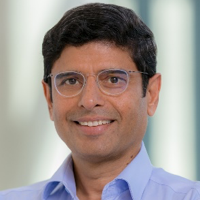Si2 Reorganizes, Promotes Two Technologists to Bolster Semiconductor Interoperability Programs
Silicon Integration Initiative, a leading research and development joint venture, has promoted two technologists as part of a reorganization to strengthen semiconductor industry design flow interoperability among its member companies.
Leigh Anne Clevenger, formerly director of OpenStandards, was promoted to vice president of Technology, and Marshall Tiner, formerly director of Production Standards, to senior director of OpenAccess.
John Ellis, president and CEO, said “experts throughout the industry consider interoperability in semiconductor design a primary strategy to accelerate innovation and achieve faster time-to-results and time-to-market. With this reorganization, Si2 positions itself to advance its current interoperability activities and identify new opportunities. Leigh Anne and Marshall have the industry expertise and technical prowess to lead this move forward.”
Since joining Si2 in 2018, Clevenger has established and driven efforts to identify and solve industry needs in applying artificial intelligence and machine learning to electronic design automation tools. She spearheads the demonstration of the Unified Power Model/IEEE-2416 standard and has been the lead developer of the Si2 prototype power calculator. She will continue driving work in AI/ML and UPM in this new role while developing additional Si2 technical activities in interoperability through the new Si2 TITAN council.
Clevenger earned her doctorate at Pace University and has published and presented research on data science, including big data analytics, machine learning algorithms and wearable computing.
Tiner joined Si2 in 2015 after stints with Motorola and IBM, where his responsibilities included design, development, manufacturing, verification, test and management. His product development achievements range from microcontrollers to workstations and liquid-cooled mainframes computers. Tiner was a key contributor in developing one of the first event-based production VLSI test systems and managed the largest install-base in North America.
In his new position, Tiner oversees the development of OpenAccess, the Si2 flagship product and the semiconductor industry’s most widely used database and API for semiconductor design.
About Si2
Si2 is a leading research and development joint venture that provides standard interoperability solutions for IC design tools. Its primary products include OpenAccess, the most widely used, open reference database for IC design, and the Compact Model Coalition, which provides an avenue to fund standard compact SPICE models and standard interfaces for simulation tool interoperability. Si2 activities are carried out under the auspices of the National Cooperative Research and Production Act of 1993, the fundamental law that defines R&D joint ventures and offers them a large measure of protection against federal antitrust laws.

 Pankaj Kukkal, vice president of Engineering at Qualcomm Inc., has been elected to the Silicon Integration Initiative board of directors. Si2 is a leading research and development joint venture that provides standard interoperability solutions for integrated circuit design tools.
Pankaj Kukkal, vice president of Engineering at Qualcomm Inc., has been elected to the Silicon Integration Initiative board of directors. Si2 is a leading research and development joint venture that provides standard interoperability solutions for integrated circuit design tools.